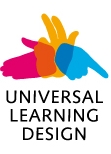Introduction
Children with Specific Learning Difficulties (SpLDs) and auditory discrimination problems provide much greater challenges to user-centered design than more traditional user groups [1, 2]. It is essential to encourage designers, who are often young and more technology-oriented, to develop a relationship with and empathy for, children with SpLDs to account for their needs in the design of interactive systems [2]. It is recommended that children with SpLDs be fully integrated into the design process. Researchers, however, need to take care to be sensitive to the different manifestations of the learning difficulties, user characteristics, sensory capabilities, and the attitudes of children with SpLDs to computers and to being included in the design and development of interactive systems [2]. This paper emphasizes the impact of using personas in the context of a persona-driven testing and evaluation of an auditory training system designed for Arabic-speaking children with hearing impairments or SpLDs.
Personas in the Design of Assistive Technology
Cooper has defined personas as “fictional characterization of users” [1]. Personas have been used to guide the creation of user profiles in interaction design [1, 3]. Personas have been shown to be effective in providing interaction designers with realistic ideas and grounded understanding of users throughout the design process [1, 6, 7, 8, 9]. However, there has been less discussion on the impact of personas on the evaluation phases in User-Centered Design (UCD) cycles.
Sada
Sada is an Arabic auditory training system which consists of games that aim to improve auditory discrimination skills for children with auditory related problems. The system is comprised of games designed in local dialects and in Modern Standard Arabic (MSA). Target user populations include children with cochlear implants, Attention Deficit/Hyperactivity Disorder (ADHD), dyslexia, Auditory Processing Disorder (APD) and autism. The UCD approach was adopted in this project; domain experts, children, caregivers were included in the requirements’ discovery, design, and evaluation phases. Based on the design team’s understanding of the characteristics and needs of each type of target users, a persona was created for each user type in the design phase of the system in a data-driven approach [6]. Involving children as design partners was not feasible due to the constraints of the project. To account for individual differences in testing, personas were used as aids for designers in the design phase. Moreover, these personas were again used in the planning for usability evaluations phase of the system and in the analysis of usability testing results to inform the revisions related to the system’s design.
Personas in the design phase
Creating personas for each class of target users, has helped in designing the system with a clear image of the child-user in the minds of the design team by focusing on the limiting characteristics and accessibility needs as noted by Henry [4]. This in turn, led to produce a user-specific design involving the profile characteristics of each child users and their adaptive strategies in using technologies in different aspects of the design (e.g. visual design of the interface, modality, and difficulty levels of games). For example, the interface and pace of the games were designed to allow configuration and customization by end users with default settings adapted to each user category’s needs.
Personas in the testing phase
In the testing phase, our personas were mapped to real users with similar profiles. Evaluations were conducted with a sample of children with SpLDs in local public schools. Using persons has proven to be a very effective approach in planning the evaluation for the design team, facilitating the testing and evaluation processes in terms of accommodating user needs in the session and analyzing the findings from these usability sessions in post-session analysis. That was apparent throughout the process in which testers were matching intuitively each of the personas with the children participating in usability testing sessions.
Conclusion
Using data-driven personas in both the design and testing phases of Sada was effective in supporting the design team’s understanding of target populations with considerable individual differences. Validating the personas with domain experts facilitated the utilization of personas in usability evaluations with real users. This project adds to the limited research available on utilizing personas in the evaluation of assistive technology for children.
References
[1] Adlin, Tamara, et al. Putting Personas to Work. In Proceedings of CHI 2006. ACM Press, 2006. p. 13–16.
[2] Areej Al-Wabil, Hebah ElGibreen, Amal Al-Suwaidan and Reem Al-Salloom . Heuristics for the Creation and Evaluation of Educational Game Software for Children with Dyslexia. 2nd International Conference on Information and Multimedia Technology. ICIMT, 2010.
[3] Areej Al-Wabil, Eman Meldah, Amal Al-Suwaidan, Aljohara AlZahrani. Designing Educational Games for Children with Specific Learning Difficulties: Insights from Involving Children and Practitioners. Accepted for presentation in the Fifth International Multi-Conference on Computing in the Global Information Technology ICCGI, Valencia, Spain, Sep 2010.
[4] Cooper, A. The Inmates Are Running the Asylum. Indianapolis, Indiana: SAMS, Division of MacMillan Computer Publishing, 1999.
[5] Henry, Shawn Lawton. Just Ask: Integrating Accessibility Throughout Design. LuLu.com Publisher, 2007.
[6] Henry, S. L., Martinson, M. L., Barnicle, K. Beyond. Video: Accessibility Profiles, Personas, and Scenarios Up Close and Personal. In Proceedings of UPA 2003 (Usability Professionals’ Association annual conference), 2003.
[7] McGinn, Jennifer (Jen), Kotamraju, Nalini. Data-driven persona development. In Proceedings of the twenty-sixth annual SIGCHI conference on Human factors in computing systems (CHI ‘08). ACM, New York, NY, USA, 2008. p. 1521–1524.
[8] Pruitt, John and Adlin, Tamara. The Persona Lifecycle: Keeping People in Mind throughout Product Design. Morgan Kaufman, 2006.
[9] Shamal Faily, Ivan Flechais. Persona cases: a technique for grounding personas. In Proceedings of the 2011 annual conference on Human factors in computing systems (CHI ‘11). ACM, New York, NY, USA, 2011.
p. 2267–2270.









